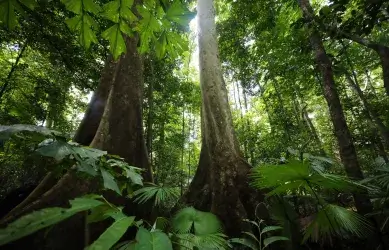
Food, Agriculture & the Environment: Can We Feed the World & Save the Earth?
Secure and nutritious food supplies are the foundation of human health and development, and of stable societies. Yet food production also poses significant threats to the environment through greenhouse gas emissions, pollution from fertilizers and pesticides, and the loss of biodiversity and ecosystem services from the conversion of vast amounts of natural ecosystems into croplands and pastures. Global agricultural production is on a trajectory to double by 2050 because of both increases in the global population and the dietary changes associated with growing incomes.
Invisible Women
Women are ubiquitous and critical to the nutritional well-being of their families, yet they are often invisible to policy-makers, public officials, community leaders, and researchers. Effecting significant decreases in the number of hungry poor people, as well as the improvement of nutritional and economic outcomes, requires policy in addition to operational and research priorities that are directed at the needs of women and girls.
Food, Health & the Environment: A Global Grand Challenge & Some Solutions
The dual burden of obesity and undernutrition is a significant public health challenge worldwide, especially in the context of a changing climate. This essay presents the most recent nutritional evidence for the optimal diet for long-term health, and offers some commentary on how production of these foods affects the environment.
Closing Yield Gaps: Consequences for the Global Food Supply, Environmental Quality & Food Security
The social, economic, and environmental costs of feeding a burgeoning and increasingly affluent human population will depend, in part, on how we increase crop production on under-yielding agricultural landscapes, and by how much. Such areas have a “yield gap” between the crop yields they achieve and the crop yields that could be achieved under more intensive management.
Land for Food & Land for Nature?
Opinions on how to limit the immense impact of agriculture on wild species are divided. Some think it best to retain as much wildlife as possible on farms, even at the cost of lowering yield (production per unit area). Others advocate the opposite: increasing yield so as to limit the area needed for farming, and then retaining larger areas under natural habitats. Still others support a mixture of the two extremes, or an intermediate approach.
A Sustainable Agriculture?
The defining challenge of sustainable agriculture is the production of food and other agricultural products at an environmental cost that does not jeopardize the food security and general welfare of future generations. Feeding another three billion people in the face of climate change, biodiversity loss, and an environment already saturated with excess nitrogen and other reactive pollutants requires new approaches and new tools in the design and deployment of workable solutions.
The Ethics of Food, Fuel & Feed
As the collective impact of human activity approaches Earth's biophysical limits, the ethics of food become increasingly important. Hundreds of millions of people remain undernourished, yet only 60 percent of the global harvest is consumed by humans, while 35 percent is fed to livestock and 5 percent is used for biofuels and other industrial products.
